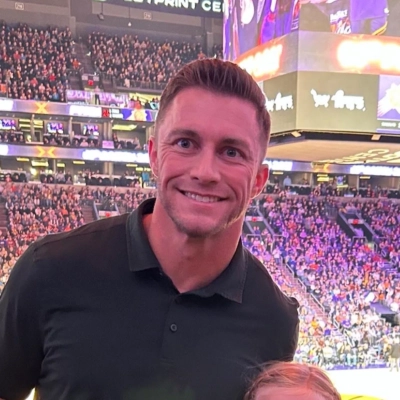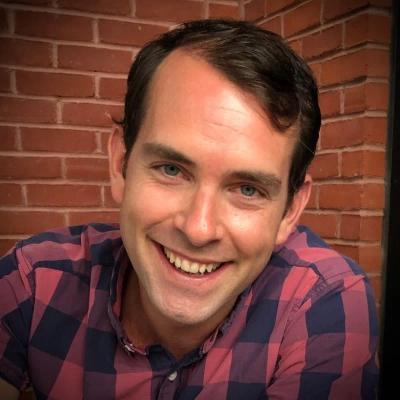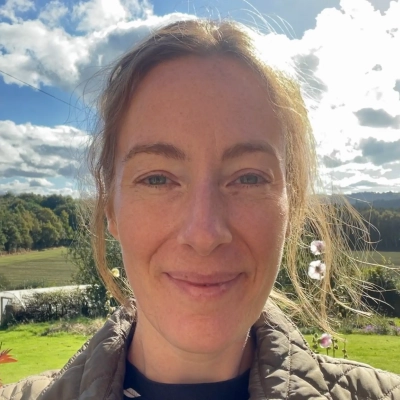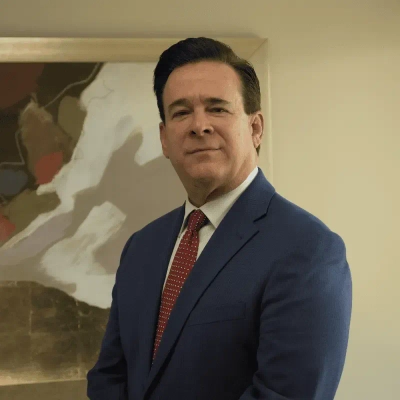25 Process Optimization Techniques That Delivered Unexpected Results"
Process optimization techniques have revolutionized business operations with remarkable and unexpected outcomes across industries. This comprehensive guide examines 25 proven approaches that yielded surprising results, featuring insights from leading efficiency experts and real-world implementation stories. From AI-powered solutions to simple yet ingenious operational adjustments, these techniques demonstrate how thoughtful process changes can dramatically impact productivity, customer satisfaction, and bottom-line results.
Using AI to Streamline Article Editing
One process optimization technique that I did was using Chat GPT in my editing flow. So, I run the first drafts of the articles I receive for editing through Chat GPT with very specific set of instructions that I've created to target the basic things that I look for while editing the article myself. I don't allow it to make changes but to just suggest changes so I have more control over the process. This cuts down on the overall time required by me to review a draft. This also allows me to shift my focus from the generic edits to more topic-specific changes.
Mini-Experiments Replace Long Development Cycles
We ceased guessing and started running 48-hour "mini-experiments" across the board. Instead of six-week specifications, each team just figured out the riskiest assumption for a feature, created the smallest slice that could confirm or deny it, and showed that slice to a real user within two days. In case the hypothesis failed, we discarded or changed the work immediately; if it succeeded, we grew it.
How it beat expectations: the main reason was that it collapsed the feedback loop. We were able to find out within a few days what used to take several months, thus saving engineering resources that would have been wasted and making product decisions more in line with actual user behavior - not just opinions. On top of that, it had a positive psychological effect as well: engineers shipped confidently, sales got to see tangible demos faster, and leadership stopped allocating budgets to unreal projects. The trick was not speed for its own sake; rather, it was a conscious decision to turn uncertainty into cheap, quick experiments. That change in mentality had a much greater effect on our work than any single tool could have ever done.

AI Automation Saves Engineering Team Time
For us it was automating a highly repetitive client reporting workflow using AI and Power Automate.
The process began with analyzing how employees spent their time using tools like TSheets and ClickUp. This revealed that our engineering team spent around 80 hours per week preparing audit reports — a task that involved manually extracting data from iAuditor, transforming it, and pasting it into Word document templates.
We implemented an AI-driven automation using Power Automate's AI Builder, training the bot to recognize and populate the correct placeholders with the corresponding data. This eliminated nearly all manual work involved.
As a result the automation saved the equivalent of two full-time admin salaries per year. I believe it was so effective because the process was both repetitive and rule-based — making it ideal for AI automation — and because the ROI was immediately measurable in time and cost savings.

Pre-Mortems Transform Project Execution and Trust
One process optimization technique that delivered results far beyond my expectations was implementing a simple "pre-mortem" before launching new projects. Instead of only analyzing what went wrong after the fact, we started asking the team upfront: "Imagine this project failed—why did it happen?"
I'll admit, the first time I introduced this exercise at Nerdigital, I wasn't sure how it would land. It felt almost pessimistic to talk about failure before we even began. But what happened surprised me. People opened up about blind spots we hadn't considered—dependencies between teams, potential bottlenecks in approvals, even risks like client delays we usually discovered too late. By surfacing these early, we made small adjustments that saved us weeks down the road.
The clearest example was with a client campaign that had a tight seasonal deadline. In the pre-mortem, someone flagged that our creative review process often dragged longer than expected because feedback came in from too many stakeholders at once. We decided to streamline by designating a single decision-maker on the client side. That one change eliminated the back-and-forth loops that normally ate up days. As a result, the campaign went live ahead of schedule and ended up outperforming projections.
Why was it so effective? I think it's because the exercise shifted the mindset. Instead of being reactive, the team felt empowered to proactively anticipate challenges. It also flattened the hierarchy in the room—junior staff who might not usually speak up during planning felt encouraged to point out risks, and often their insights were the most valuable.
Looking back, the surprising part wasn't just the efficiency gains, though those were significant. It was how much trust it built within the team. Everyone felt ownership, not just over the success, but over protecting the project from failure. That sense of shared accountability turned out to be the real engine behind the results.

Zip Code Routing Maximizes Technician Efficiency
One of the biggest wins we had came from changing how we scheduled our technicians. For years, we relied on a pretty traditional route system, which often left techs driving back and forth across town. We finally invested time in optimizing routes based on zip codes and neighborhoods, making sure a technician could complete multiple stops in the same area before moving on. What seemed like a minor adjustment ultimately saved us a significant amount of drive time and fuel costs, while also allowing technicians more time at each stop.
I think it worked so well because it solved more than one problem at once. Not only did it reduce wasted travel, but it also minimized delays and gave our team more breathing room to focus on customers rather than rushing to meet deadlines. In our industry, that extra attention translates to better service and stronger relationships with homeowners, which is just as valuable as the efficiency gains.

Standardized Van Blueprints Eliminate Mental Friction
It is truly valuable when a simple change in routine yields massive returns, and that focus on efficiency is the clearest path to success. My experience with "process optimization" was all about cleaning up the workspace. The "radical approach" was a simple, human one.
The process I had to completely reimagine was how my crew organized their work vans. Every van was a chaotic mess, and we were wasting massive amounts of time searching for tools and materials. I realized that a good tradesman solves a problem and makes a business run smoother by ensuring his mobile workshop is organized and ready to go.
The one process optimization technique that delivered results far beyond expectations was Standardized Van Blueprinting. Every van was mapped and organized identically, so any tradesman could jump into any vehicle and instantly find the right tool or material. This eliminated the biggest time killer: the mental friction of searching.
The effectiveness came from saving mental energy. The unexpected benefit was a significant drop in on-the-job wiring errors. Because the crew wasn't frustrated and distracted by a messy van, they could focus completely on the precise technical work.
My advice for others is to organize your space. A job done right is a job you don't have to go back to. Eliminate the physical chaos to free up mental clarity. That's the most effective way to "measure process optimization" and build a business that will last.

48-Hour Response Guarantee Closes More Deals
I implemented a 48-hour response guarantee where we commit to making an offer on any property within two business days of our initial walkthrough. This forced us to streamline our entire evaluation process and eliminate unnecessary back-and-forth meetings that were slowing us down. It was incredibly effective because it gave distressed homeowners the quick certainty they desperately needed, and we started closing deals that competitors lost simply because they took too long to decide.
Tech-First Approach Recycles Outdated Processes
One of the most surprising wins came from streamlining how we approached recycling old processes that no longer served the business. I like to think about optimization the same way I look at sustainability: if something is draining resources, whether it's energy or time, it has to be rethought. In this case, we applied a tech-first lens to consolidate overlapping workflows. By using smarter systems and a tighter framework, we cut down on wasted effort and created a loop that reused knowledge and assets instead of constantly starting fresh. What struck me was how quickly this ripple effect spread. Teams became more confident, partnerships moved faster, and we had more capacity to evaluate strategic investments. The effectiveness came from the balance of simplicity and discipline. We didn't chase complexity; we stripped it away, and that revealed opportunities hiding in plain sight. The lesson was clear: optimization doesn't always come from reinventing the wheel; sometimes it comes from recycling what you already have and applying technology to make it sharper. For me, that was a turning point in how I think about scaling partnerships and corporate development in unpredictable markets, because it proved that sustainability and efficiency go hand in hand.

End-of-Day Material Staging Eliminates Morning Chaos
My business relies on simple, consistent processes. The one "process optimization technique" that delivered results far beyond my expectations was implementing a non-negotiable End-of-Day Material Staging Rule. We used to lose money every morning to wasted time.
The process is simple. I mandated a ten-minute rule at the end of every workday: all tools must be organized, placed near the next day's installation point, and the first task of the next morning must be written on a small whiteboard. The crew initially hated spending ten minutes organizing when they wanted to leave.
The result that exceeded expectations was the elimination of "Morning Chaos." That ten minutes of organizing the afternoon before eliminated 45 minutes of searching for tools, arguing about the plan, and wasting daylight the next morning. The crew now hits the roof faster and with better morale because the job is ready for them.
The key lesson is that true optimization is found in eliminating the small, daily frictions that drain time and morale. My advice is to stop rushing the end of the day. Spend a mandatory ten minutes setting up the next morning flawlessly, because a smooth start guarantees a fast, safe, and efficient finish.
Video Tutorials Cut Technician Training Time
We changed the way we trained new technicians by creating short, on-the-job video tutorials instead of relying only on manuals or shadowing. I honestly thought it would just be a nice supplement, but it turned into a huge improvement in how quickly new team members became confident in the field. They could revisit the clips at any time, which meant fewer mistakes and faster learning.
The reason it proved so effective is that pest control involves many small details that are easy to overlook when you're new. Having visual, step-by-step guides recorded in real Phoenix homes made the lessons stick. It cut our training time in half and gave our team a consistent standard across the board.

SMS Marketing Transforms Lead Generation Results
I shifted from cold calling to SMS marketing for lead generation, and the results completely transformed our business--we went from struggling to find motivated sellers to consistently closing 6-8 deals per month. The effectiveness came down to timing and persistence; text messages allowed us to reach homeowners when they were ready to engage, rather than interrupting their day with a phone call. What really made it work was that SMS felt less invasive, so people were more willing to respond and start a conversation about their situation.

Dynamic Pricing Algorithm Balances Quality and Speed
"We implemented dynamic pricing for our video editing queue that transformed both economics and quality. Instead of flat rates, we built an algorithm that adjusts editor compensation based on complexity, turnaround time, quality history, and even time of day. Rushed weekend projects pay more. Complex healthcare videos with compliance requirements pay more. Editors with consistent 5-star ratings earn more for the same work.
The results obliterated our projections. Editor retention hit record highs. Average video quality scores increased despite faster turnarounds. We thought we'd trade quality for speed, but both improved dramatically.
Why it worked brilliantly in our case: it solved the invisible problem of editor motivation. Previously, our best editors cherry-picked easy projects for quick money while complex projects languished. Now complex work pays appropriately, rush jobs get grabbed immediately, and quality work gets rewarded automatically. The system became self-balancing.
The unexpected breakthrough: transparency changed behavior on both sides. Editors could see exactly why each project paid what it did, so they started improving skills that increased their rates. Clients could see the price factors, so they started providing clearer briefs to reduce complexity scores. We accidentally gamified quality improvement.
We now process 2,500+ videos monthly with 400+ editors because dynamic pricing turned a chaotic marketplace into a predictable system. The lesson: static pricing in dynamic environments creates perverse incentives. When price reflects reality, behavior aligns naturally.

Automated Patient Scheduling Reduces Missed Appointments
We've tried different optimization techniques over the years, but there's one process that made a big difference in our company. It was implementing automated scheduling and communication systems for patient appointments. I can say it made a huge difference because before we implemented that, we spent a lot of time manually coordinating reminders, calls, and follow-ups. We realized it's taking up a lot of our time, so we shifted to an integrated digital system and saw a big improvement in efficiency. The missed appointments got fewer, and we received better patient satisfaction.
From what I've seen, it worked for us because it removed repetitive tasks from our team's workload, and it allows them to focus more on patient care rather than on administrative tasks most of the time. Doing this also created consistency across all our departments, and it reduces delays and confusion. In the healthcare business, time is the most valuable resource for us, and simple automation can help us use our time efficiently.
Post-Sale Feedback Calls Drive Genuine Improvements
One technique that really moved the needle for us was introducing a post-sale feedback call with every homeowner--no scripts, just a real conversation about what worked and what didn't. These candid chats helped us catch small issues, revisit our assumptions, and spot opportunities to simplify things that clients found confusing. Because the feedback came directly from the people we serve, we were able to make changes that genuinely improved their experience, leading to more referrals and trust than any marketing initiative could have.

Preventive Maintenance Program Reduces Emergency Calls
Absolutely, I would be happy to share a meaningful process optimization technique that has had a significant impact on ALP Heating LTD.
One standout strategy we implemented is the enhancement of our preventive maintenance program, ALPCare. Initially, our focus was primarily on emergency repairs and installations. However, we recognized that many of our customers were facing unexpected HVAC issues due to a lack of regular maintenance. This inspired us to shift our approach and invest in creating a more robust preventive maintenance plan.
The ALPCare program offers annual inspections, cleaning, and tuning of HVAC systems, along with priority service and automatic maintenance reminders. What we found was that by emphasizing a proactive approach, we drastically reduced the number of emergency calls we received. In fact, since launching this program, we've seen a 30% decrease in emergency service requests, which not only improved our operational efficiency but also enhanced customer satisfaction.
This technique was effective for several reasons. First, we aligned our services with the specific needs of our community in the Greater Toronto Area, where seasonal extremes can put a lot of stress on heating and cooling systems. By encouraging customers to schedule regular maintenance, we helped them avoid the stress and cost of sudden breakdowns.
Additionally, the program fosters a stronger relationship with our clients. Customers appreciate the peace of mind that comes from knowing their systems are being cared for regularly, which in turn builds trust and loyalty. As a family-owned business, we strive to treat our clients like family, and this approach has allowed us to create a more personalized experience.
Lastly, our TSSA-certified technicians are committed to quality workmanship, ensuring that every maintenance visit is thorough and effective. This dedication to safety and excellence has proven to be a cornerstone of our success.
In summary, optimizing our preventive maintenance through the ALPCare program has not only streamlined our operations but has also reinforced our commitment to customer care. It's a real win-win-customers enjoy greater comfort and lower costs, while we benefit from healthier business operations and stronger client relationships. As we look to the future, we plan to continue refining and expanding this program to better serve our community.

UX-First Approach Boosts Search Rankings Naturally
When we redesigned our B2B SaaS product page, we took a UX-first approach rather than focusing solely on traditional SEO tactics. We completely revamped the information architecture and layout, strategically repositioning key elements like our value proposition and social proof while adding a clear pricing explainer that addressed common customer questions. The page was rebuilt using semantic HTML to ensure both users and search engines could better understand our content structure. What surprised us most was how this user-centered redesign not only improved the experience for visitors but also significantly boosted our search rankings without any specific keyword optimization work. The results validated our belief that when you truly prioritize user experience, search engines reward that approach because it aligns with their ultimate goal of connecting users with truly valuable content.

Mobile Property Inspection App Secures Deals Faster
I introduced a mobile-first property inspection app that lets me document everything on-site instantly--photos, measurements, repair notes, and cost estimates--all synced to our CRM in real-time. Coming from my construction background, I knew how much time we were wasting going back to properties for forgotten details or waiting days to compile inspection reports. This was incredibly effective because it allowed us to present complete, professional offers to homeowners while still sitting in their driveway, often securing deals before they even considered other buyers.
Call Script Boosts Appointment Rates
One process optimization that exceeded my expectations was implementing a structured call prequalification script for inbound and outreach leads. Before, conversations were inconsistent—some calls ran long without producing next steps, while others missed critical qualifying details.
By creating a standardized script with clear decision points, we cut average call time by 35% and increased booked qualified appointments by nearly 40%. The surprising part was how much confidence it gave the team: instead of improvising, they had a proven roadmap, which made every interaction more professional and consistent.
It worked so well in our case because our business depends on filtering a wide pool of potential clients down to a small, high-value group. Optimizing that first touchpoint multiplied results across the entire sales pipeline.
Seller Qualification System Prioritizes Urgent Leads
I created a pre-screening qualification system for potential sellers that ranks properties by distress level, timeline urgency, and motivation factors before we even schedule a visit. This seemingly simple change delivered remarkable results because it allowed us to prioritize homeowners who truly needed our services quickly, rather than spreading ourselves thin across every lead. The efficiency boost was incredible--we now close 40% more deals with the same team size because we're focusing our energy on the right opportunities from the start.

Visual Timeline Builds Trust With Homeowners
I started having my team take photos and create a simple visual timeline for every homeowner showing exactly where their property stands in our process--from initial evaluation through closing. This might sound minor, but it transformed how people felt about working with us because they could literally see their progress instead of wondering what was happening behind the scenes. It was incredibly effective because selling a home during a crisis already feels overwhelming, and giving families that visual reassurance helped them trust the process and feel genuinely cared for throughout what's often the most stressful transaction of their lives.

Roadblock Huddles Prevent Bottlenecks Before Escalation
One process that really surprised us was implementing weekly 'roadblock huddles'--quick team meetings focused only on what's stuck and why. Giving everyone permission to voice the smallest issue, from a missing document to misunderstood terms, meant we caught and resolved little bottlenecks before they snowballed. This was so effective because it kept deals moving for families who needed answers fast and made our small team feel truly connected to each step.
Decision Documentation Creates Valuable Institutional Knowledge
The process optimization technique that delivered far beyond expectations at VoiceAIWrapper was implementing "asynchronous decision documentation" - requiring every decision to be written down with reasoning before implementation, regardless of size or urgency.
Initially, this seemed like bureaucratic overhead that would slow down our fast-moving startup culture. I implemented it reluctantly after repeated instances where team members made conflicting assumptions about priorities, leading to wasted effort and customer confusion.
The rule was simple: before implementing any change affecting customers or other team members, write a brief explanation of what you're doing and why. Not seeking approval - just documenting reasoning for future reference.
What happened exceeded every expectation. First, the act of writing down decisions forced better thinking. People naturally considered alternatives and implications when they had to articulate reasoning rather than just acting on instinct.
More importantly, documented decisions became searchable institutional knowledge. When similar situations arose, team members could reference previous reasoning and build on prior logic rather than starting from scratch each time.
The unexpected breakthrough was that this documentation eliminated most unnecessary meetings. Instead of scheduling discussions to align on approach, people could read previous decisions and either build on them or propose specific changes with clear reasoning.
Customer satisfaction improved dramatically because our decisions became more consistent and thoughtful. When clients asked about feature prioritization or technical choices, we could provide coherent explanations rooted in documented business logic.
The technique was effective because it created compound value - each documented decision made future decisions easier and better informed. Instead of losing institutional knowledge when people moved between projects, we built an accessible decision history.
Implementation required minimal overhead but created exponential returns through better decision quality, reduced redundant discussions, and preserved institutional knowledge. The writing process itself improved thinking quality, while the documentation improved team coordination.
The key insight: forcing articulation of reasoning improves decision quality more than elaborate approval processes, while creating valuable organizational memory as a side benefit.

Feature Funerals Free Resources for Innovation
At Cisco, the most unexpected process optimization I encountered involved making Feature Funeral a mandatory bi-annual event which focused on selecting features for deprecation instead of new idea discussions. The ritual revealed maintenance expenses and product complexity costs which led to a 30% increase in engineering resources for innovation. The new discipline proved so successful because it transformed organizational momentum by requiring teams to prove that the feature captured intended value.

Email Templates Build Client Trust
One process optimization technique that delivered results far beyond my expectations was implementing a standardized email template system for client updates. At first, the goal was simple save time and ensure consistent communication. But the impact reached far deeper than efficiency.
Before we made the change, our team spent hours each week drafting individual case update emails. The messages varied in tone and content, which sometimes caused confusion or led to unnecessary follow-up questions. We created a library of clear and professional templates tailored to different stages of a case, including intake, document collection, case review, and settlement.
What made this technique so effective was that it improved both internal workflow and client satisfaction. Response time improved, staff felt more confident communicating, and clients appreciated the timely and structured updates. We saw a noticeable drop in repeated questions and a rise in positive feedback.
The reason it worked so well in our firm is because legal clients often feel anxious when they do not hear from their attorney. Consistent communication, even if brief, builds trust. What began as a time saver became a client retention tool and a morale booster for the team. It reminded me that small systems can solve big problems.
Micro-Specialization Teams Master Data Processing Challenges
One process optimization technique that exceeded all expectations for us was introducing "micro-specialization" within our data annotation teams. Instead of training everyone across multiple data types, we built tightly focused micro-teams — each dedicated to a single data format or domain.
At first, it felt counterintuitive: narrowing individual scopes in a fast-moving business seemed risky. But within two months, output accuracy rose by nearly 40%, and onboarding time for new projects dropped dramatically. What made it so effective was how it aligned with human behavior — people learn faster and take more ownership when they can see mastery forming in a defined area.
At Tinkogroup, where we handle complex, large-scale data processing, this approach turned what used to be a bottleneck into a strength. It taught me that true optimization isn't about speed alone — it's about clarity of focus and creating the right environment for consistency to thrive.










